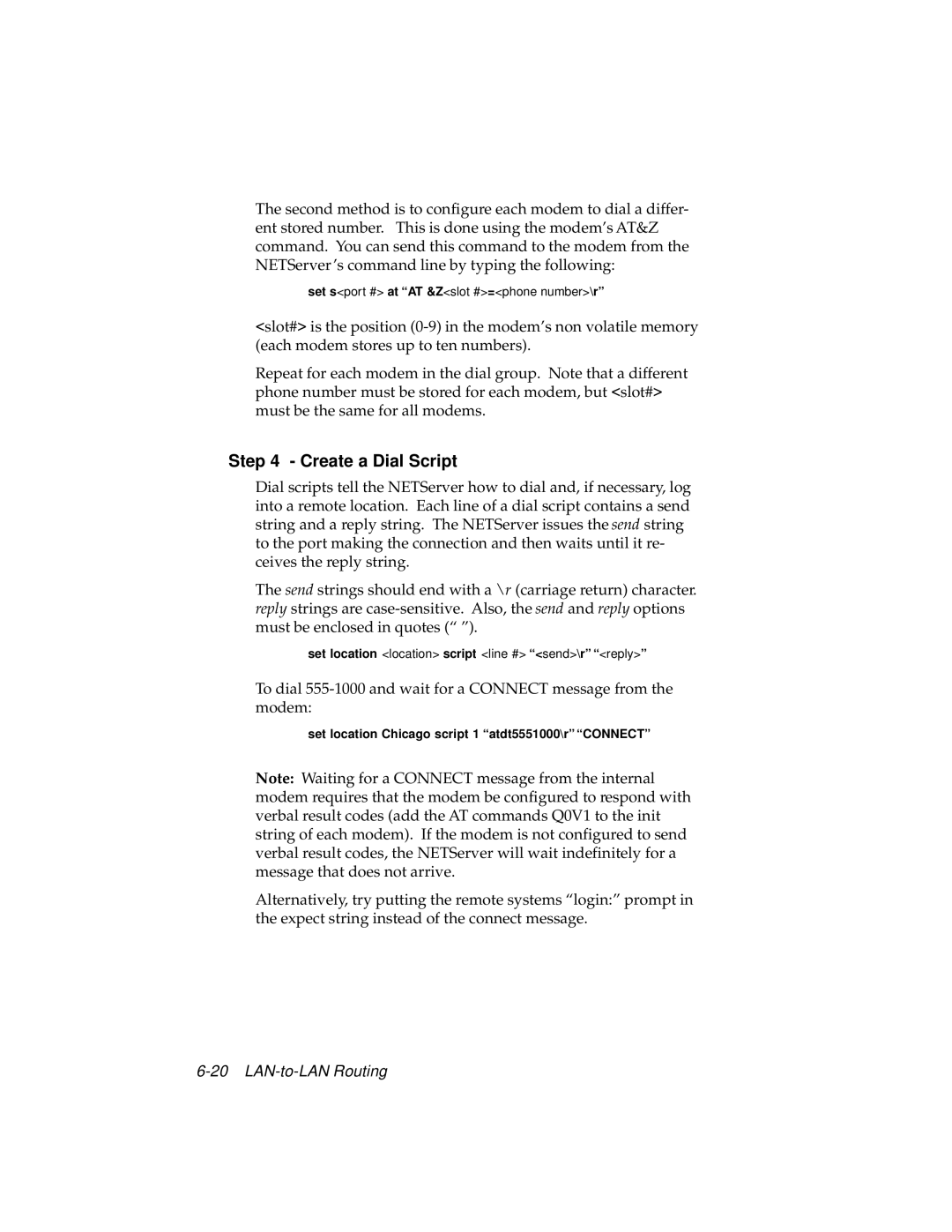The second method is to configure each modem to dial a differ- ent stored number. This is done using the modem’s AT&Z command. You can send this command to the modem from the NETServer’s command line by typing the following:
set s<port #> at “AT &Z <slot #>=<phone number>\r”
<slot#> is the position
Repeat for each modem in the dial group. Note that a different phone number must be stored for each modem, but <slot#> must be the same for all modems.
Step 4 - Create a Dial Script
Dial scripts tell the NETServer how to dial and, if necessary, log into a remote location. Each line of a dial script contains a send string and a reply string. The NETServer issues the send string to the port making the connection and then waits until it re- ceives the reply string.
The send strings should end with a \r (carriage return) character. reply strings are
set location <location> script <line #> “< send>\r” “ <reply>”
To dial
set location Chicago script 1 “atdt5551000\r” “CONNECT”
Note: Waiting for a CONNECT message from the internal modem requires that the modem be configured to respond with verbal result codes (add the AT commands Q0V1 to the init string of each modem). If the modem is not configured to send verbal result codes, the NETServer will wait indefinitely for a message that does not arrive.
Alternatively, try putting the remote systems “login:” prompt in the expect string instead of the connect message.
